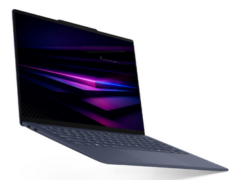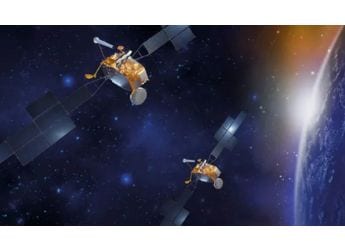- Home
- Cameras
- Cameras Reviews
- Nikon Coolpix P330 review
Nikon Coolpix P330 review
By Gagandeep Singh Sapra | Updated: 30 May 2013 17:17 IST
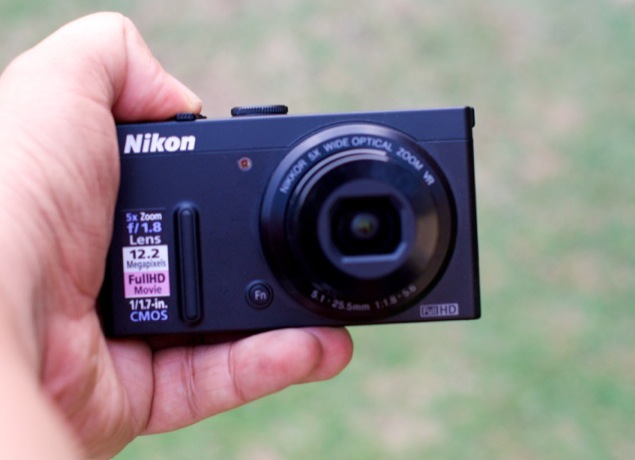
Click Here to Add Gadgets360 As A Trusted Source

Advertisement
Nikon Coolpix P330 is a new point and shoot from Nikon that gives you a 5x optical zoom, a 24 to 120 mm wide-angle zoom lens, with a maximum aperture of f/1.8. It is targeted at a consumer who is looking at more control on the camera than a basic point-and-shoot, without the bulk associated with a DSLR. Does the Coolpix P330 deliver on this count? Let's find out.
In the box
Nikon Coolpix P330 camera
Nikon EN-EL-12 Lithium Ion Battery
Charger with unpolarised NEMA plug
Convertor to use with Indian sockets
USB cable
RCA to USB/AV out cable
Lanyard (Handstrap)
CD With reference manual
CD With Nikon View NX2 software
Warranty cards and manuals
Though the camera is capable of recording full-HD video, and also has an HDMI port, Nikon does not include an HDMI Cable, and gives a RCA Cable. This felt a bit odd.
Build/ Design
The moment you take it out of the box, the first thing that you notice about the Nikon Coolpix P300 is the boxy sharp feel. When you hold it in your hands, the grip is pretty solid - from the rubberised thumb rest to the metal body, it feels solid and very nicely built, yet remains light enough to be carried around.
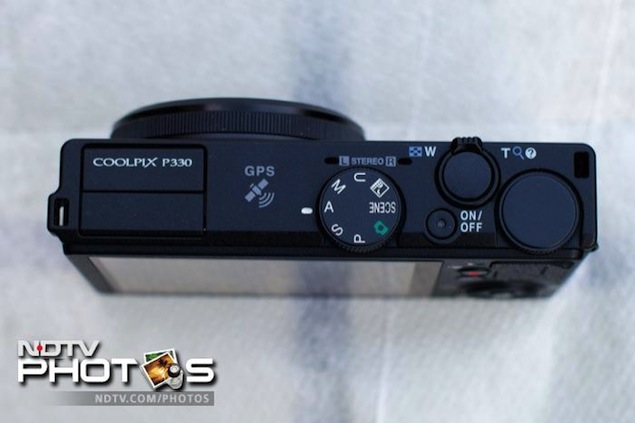
The buttons are easily accessible for single-handed shooting, with your thumb being able to control both the mode dial as well as the shutter speed dial in case you are shooting on the manual. From an ergonomics standpoint, the front of the camera is flat, but a raised bump of rubber ensures that your grip is tight and the camera stays firm in your hand.
Features/ Performance
As mentioned earlier, the Nikon Coolpix P300 is designed for a user who wants more from a point-and-shoot camera, or for someone who is used to a DSLR but wants to travel light. The mode dial lets you select from a Full Auto mode, Portrait mode, Shutter Priority mode (S), Aperture Priority mode (A), a full Manual mode (M), a User Defined mode (U), a Scene mode and a Night Picture mode. The on-off button is in the middle of two large dials, the mode dial and the shutter speed control dial, and both the dials are easy to operate. With the Power button depressed in a groove, you don't accidentally hit it while shooting, which is nice.
The typical Wide to Tele zoom dial and a rather large shutter button are present as well.
The Nikon Coolpix P300 comes with more 'mode's than your typical point-and-shoot camera. In most compact cameras, you typically get a Portrait mode, a Auto mode, a Scenes mode and perhaps a Night Shot mode. The P330, however, comes with a Shutter priority mode, the Aperture priority mode, the Full Manual mode, as well as a User Defined mode, offering the kind of control and flexibility you usually see in a DSLR.
To get started with the camera, you pop it open at the bottom and insert the battery and the memory card (the camera takes SD, SDHC and SDXC Cards). With the memory slot at the bottom, if you mount the camera on a tripod, you'll have to take it off just to change the card.
Switching on the camera the first time around requires you to setup the time, date, the country you are in and the language. Quickly finishing this setup, you can go and setup the ISO Settings or leave them to the default Auto. There is a Function button on the front side of the camera, that you can allocate a function of your choice, such as to change the ISO, which is what I did. Setup your metering to either spot or centre weighted, and your focussing, and the camera is ready to go.
It is nice to see that Nikon offers RAW capabilities on the camera, and you can save the images in RAW and JPEG both. If you are shooting in JPEG mode (default) make sure you set the image quality to Fine Setting as by default it is set to Standard.
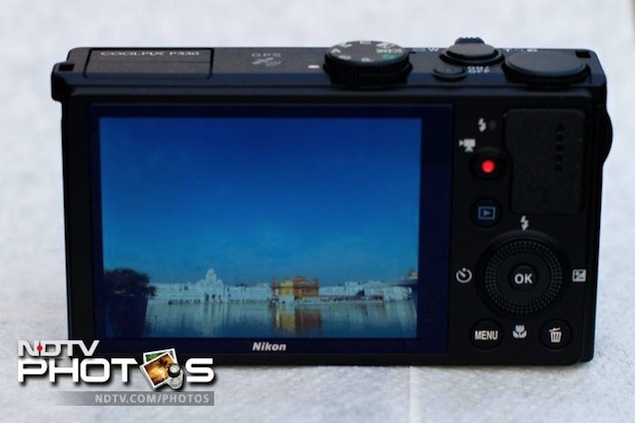
The screen is pretty sharp and bright, and worked well on an outdoor shoot across the day at the Golden Temple, Amritsar. I had the sun shining on me, and with the water from the sarovar reflecting the sun, there were very few times I missed the viewfinder.
I was expecting the front dial around the lens to be rotatable so that I could use that for settings but that is fixed, this means in a full Manual mode, the shutter speed settings are done by the dial on top, but for the Aperture settings you have to depend on the scroll wheel near the menu buttons at the back. I changed to Aperture mode to realise that the aperture settings can be controlled only by this dial, and was unable to find a way to switch the settings so that I could use the dial on top for aperture control.
Anyway, since the camera offered an f/1.8 aperture and I was shooting some scenes at the end of the day, it made more sense for me to use aperture mode, I setup the ISO to be around 400 and put the camera on a wide Shutter of f/1.8 and got some great pictures.
The fact that I could not switch between choosing which dial is for aperture setting and which for shutter was a bit of a bother at first, but once I got used to the placement, it wasn't much of an issue. But yes, I did manage to rotate the wrong dial on a couple of occasions.
What is nice to see with Nikon is that the flash is now only a manual popup. This means the camera will warn you that it needs the flash and you will have to pop it up manually from the side, so no mis-fires of the flash and getting bad pictures. If you don't really need flash, you can shut it by depressing it and it won't fire again until you raise it again manually.
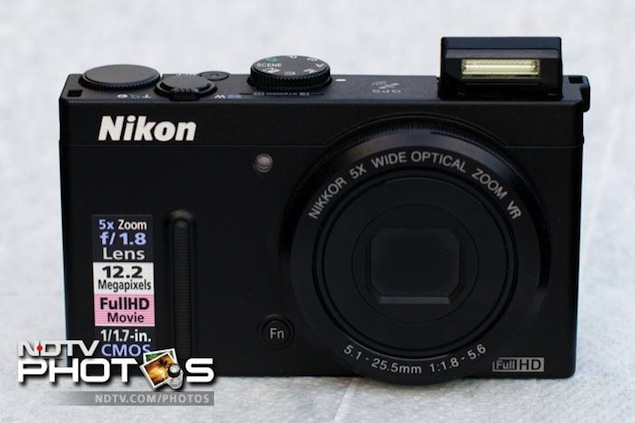
The lens is optically stabilised and if you have visited the Golden temple, you would know that the queues can stretch up to an hour of waiting. I used the lens at full zoom to take a few shots, and the camera managed these pretty well and delivered sharp results in the daytime. However, at night one needs to be careful and preferably use a flat surface on which the camera is or use a tripod, to get the perfect shot. The wide-angle lens is a great companion for taking portrait as well as landscape shots, and the camera seems pretty stable while also feeling good in the hand.
The camera comes with a built-in GPS that records location of your photos. The GPS performs spot on, but you do have to update the A-GPS file when you start it, it is sharp and precise and finds a lock instantly, though indoors is usually an issue.
Nikon Coolpix P330 can be attached to a WU-1A mobile adapter accessory from Nikon that allows you to take pictures remotely over Wi-Fi from your mobile phone. You can see the live view sitting at a distance from the camera and even transfer images from the camera to your mobile phone to share over the Internet. The accessory costs an additional Rs. 3,510.
The Camera charges over a USB Port, this means there is no need to carry an additional adapter, but you do have to carry the USB cable supplied as it uses a different format of the USB connector on the Camera end. You can also buy a separate charger for the battery in case you need one.
The Nikon Coolpix P330 comes with a 3.0-inch screen with 912k dots that is nice and bright but at times on a very sunny day you may miss a viewfinder.
Focus system
The focus system on the Nikon Coolpix P330 is pretty efficient for a point-and-shoot. A half press of the shutter kicks in the auto focus and in about quarter of a second the image is focussed with no delay going forward. In tricky situations, like sunlight coming from the front of the camera, I did miss the manual focus, but the camera adapted pretty well, and the resultant image was quite good.
Image quality
One does not expect DSLR quality images from a point-and-shoot, but the P330 performed well over all. I shot most of the images in RAW and used Aperture on a Mac to process these images. Even while viewing and cropping at full-zoom, the images retained their sharpness. While the image quality can't really be compared to those from a larger sensor, but the backlit sensor in the P330 helped in getting some great images in the evening and some very sharp images in the day.
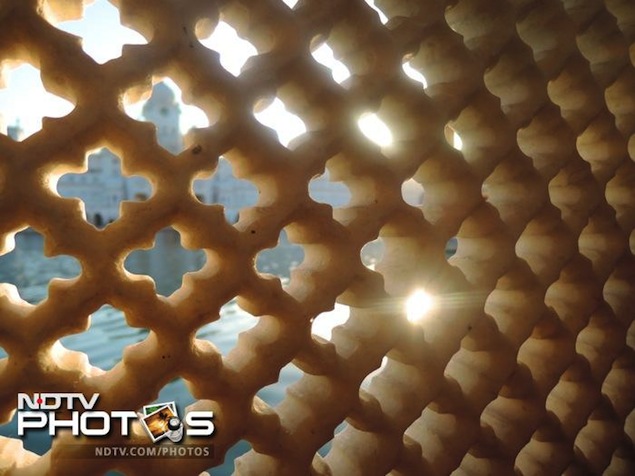
To some the 12-megapixel sensor may seem small or undersized, but in my usage experience, I did not mind a slightly smaller sensor. Unless you are planning to blow up an image and put it up as a hoarding at a crossing, you wouldn't need any more megapixels either.
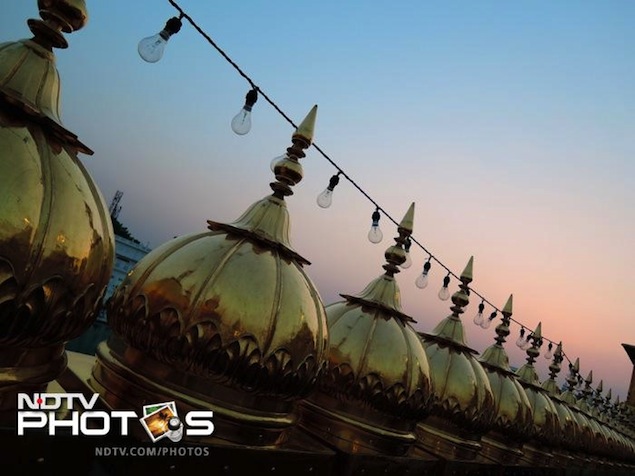
The camera performs very well indoors under artificial light. From shots taken at a restaurant, to a public park at night, I never felt the need of popping up the flash, and the pictures still came out quite good. This means that you can carry it to a birthday party and manage to get some interesting pictures without flashing people in their eyes, or worrying about red eyes. Only in rare cases where it was pitch dark did I feel the need to use the flash.
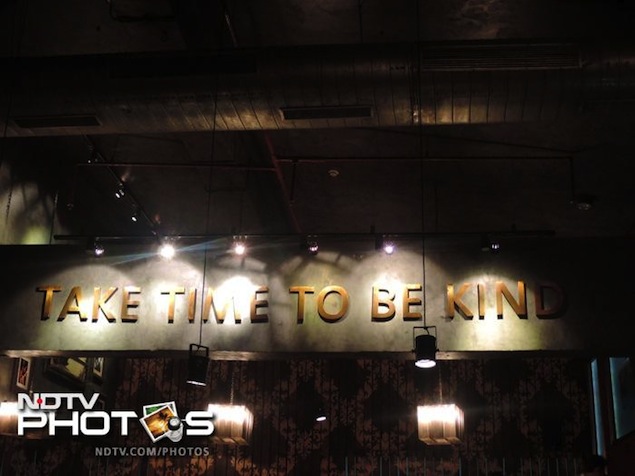
The flash is designed pretty well and does a decent fill in where required, though you may not find a reason to use the flash, because of a good low light performance on the camera. However, on the rare occasion that you do, the flash fills in the scene without becoming overbearing. Whenever you use a flash (with any camera), make sure there is enough distance between you and the subject, so that the flash bounces off properly and you don't end up with areas that are pure white.
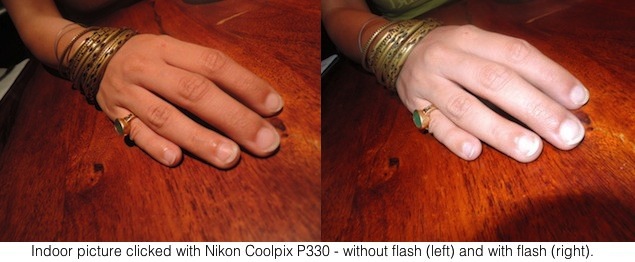
For more shots clicked with the Nikon Coolpix P330, visit our gallery.
Video
I am not very fond of shooting videos with point-and-shoot cameras, but the video quality on the Nikon Coolpix P330 was surprisingly good. I shot a video of the family driving down to the holy city, and the camera picked up voices easily in the car, though it did have a bit of traffic noise, indicating that the camera has good reception. The video itself looked pretty sharp.
The camera can take 1080p full high-definition videos and in case you are running short of space on your card, you can always switch the video resolution down to 720p or even 480p. The camera also lets you click a snapshot while recording the movie if you press the shutter button all the way down, but remember the shutter sound will get recorded too.
The autofocus takes a little bit of time to readjust when you zoom in or out, or say, move outdoors from indoors, but overall it performed decently for a home video shoot. In case you wish to take some movies at a birthday party or your kids' school event, the camera is unlikely to let you down.
Battery life
The Nikon Coolpix P330 uses an EN-EL-12 lithium ion battery that is found on quite a few Nikon point-and-shoot cameras. The battery delivers 200+ shots on a single charge.
The battery can be charged while inside the camera by simply connecting the camera to a USB port (USB charger is included). The battery can also be charged externally (without the camera) with a separate charger (not included), in case you are someone who likes to have multiple batteries around for backup.
Verdict
Overall, especially for its price, the Nikon Coolpix P330, seems like a wonderful camera. There are other point-and-shoots that perform this well, but all of them are in the Rs. 30,000 plus category. At the current price point of Rs. 16,950, the P330 is a great buy.
I did miss not having a Grid to help compose my shots, and the P330 doesn't seem to have a setting to enable this either. I also did not like the fact that I could not swap the aperture control and shutter control dials, though the ability to set function button to whatever you like is pretty handy. The User mode is great to get the camera out of the pocket and shoot immediately on custom settings.
The metal body though has a boxy look which makes the camera look rather dated, but when you hold it in your hand and actually give it a shot, the camera feels wonderful and solid, thanks to it's mix of metal and rubber.

Nikon Coolpix P330: Hands on and sample shots
Pros
High-speed autofocus
Good quality, sharp pictures
Good low light performance
Fits easily in pocket
Cons
No viewfinder
Can't switch Shutter and Aperture dials
No gridlines to help compose shots
Price: Rs. 16,950
Ratings (Out of 5)
Build/ Ergonomics: 3.5
Features/ Performance: 4
Image Quality: 4
Video: 3.5
Battery Life: 4
Value for Money: 5
Overall: 4
Gagandeep Singh Sapra is a technology entrepreneur, and is popularly known as The Big Geek (@thebiggeek).
In the box
Nikon Coolpix P330 camera
Nikon EN-EL-12 Lithium Ion Battery
Charger with unpolarised NEMA plug
Convertor to use with Indian sockets
USB cable
RCA to USB/AV out cable
Lanyard (Handstrap)
CD With reference manual
CD With Nikon View NX2 software
Warranty cards and manuals
Though the camera is capable of recording full-HD video, and also has an HDMI port, Nikon does not include an HDMI Cable, and gives a RCA Cable. This felt a bit odd.
Build/ Design
The moment you take it out of the box, the first thing that you notice about the Nikon Coolpix P300 is the boxy sharp feel. When you hold it in your hands, the grip is pretty solid - from the rubberised thumb rest to the metal body, it feels solid and very nicely built, yet remains light enough to be carried around.
The buttons are easily accessible for single-handed shooting, with your thumb being able to control both the mode dial as well as the shutter speed dial in case you are shooting on the manual. From an ergonomics standpoint, the front of the camera is flat, but a raised bump of rubber ensures that your grip is tight and the camera stays firm in your hand.
Features/ Performance
As mentioned earlier, the Nikon Coolpix P300 is designed for a user who wants more from a point-and-shoot camera, or for someone who is used to a DSLR but wants to travel light. The mode dial lets you select from a Full Auto mode, Portrait mode, Shutter Priority mode (S), Aperture Priority mode (A), a full Manual mode (M), a User Defined mode (U), a Scene mode and a Night Picture mode. The on-off button is in the middle of two large dials, the mode dial and the shutter speed control dial, and both the dials are easy to operate. With the Power button depressed in a groove, you don't accidentally hit it while shooting, which is nice.
The typical Wide to Tele zoom dial and a rather large shutter button are present as well.
The Nikon Coolpix P300 comes with more 'mode's than your typical point-and-shoot camera. In most compact cameras, you typically get a Portrait mode, a Auto mode, a Scenes mode and perhaps a Night Shot mode. The P330, however, comes with a Shutter priority mode, the Aperture priority mode, the Full Manual mode, as well as a User Defined mode, offering the kind of control and flexibility you usually see in a DSLR.
To get started with the camera, you pop it open at the bottom and insert the battery and the memory card (the camera takes SD, SDHC and SDXC Cards). With the memory slot at the bottom, if you mount the camera on a tripod, you'll have to take it off just to change the card.
Switching on the camera the first time around requires you to setup the time, date, the country you are in and the language. Quickly finishing this setup, you can go and setup the ISO Settings or leave them to the default Auto. There is a Function button on the front side of the camera, that you can allocate a function of your choice, such as to change the ISO, which is what I did. Setup your metering to either spot or centre weighted, and your focussing, and the camera is ready to go.
It is nice to see that Nikon offers RAW capabilities on the camera, and you can save the images in RAW and JPEG both. If you are shooting in JPEG mode (default) make sure you set the image quality to Fine Setting as by default it is set to Standard.
The screen is pretty sharp and bright, and worked well on an outdoor shoot across the day at the Golden Temple, Amritsar. I had the sun shining on me, and with the water from the sarovar reflecting the sun, there were very few times I missed the viewfinder.
I was expecting the front dial around the lens to be rotatable so that I could use that for settings but that is fixed, this means in a full Manual mode, the shutter speed settings are done by the dial on top, but for the Aperture settings you have to depend on the scroll wheel near the menu buttons at the back. I changed to Aperture mode to realise that the aperture settings can be controlled only by this dial, and was unable to find a way to switch the settings so that I could use the dial on top for aperture control.
Anyway, since the camera offered an f/1.8 aperture and I was shooting some scenes at the end of the day, it made more sense for me to use aperture mode, I setup the ISO to be around 400 and put the camera on a wide Shutter of f/1.8 and got some great pictures.
The fact that I could not switch between choosing which dial is for aperture setting and which for shutter was a bit of a bother at first, but once I got used to the placement, it wasn't much of an issue. But yes, I did manage to rotate the wrong dial on a couple of occasions.
What is nice to see with Nikon is that the flash is now only a manual popup. This means the camera will warn you that it needs the flash and you will have to pop it up manually from the side, so no mis-fires of the flash and getting bad pictures. If you don't really need flash, you can shut it by depressing it and it won't fire again until you raise it again manually.
The lens is optically stabilised and if you have visited the Golden temple, you would know that the queues can stretch up to an hour of waiting. I used the lens at full zoom to take a few shots, and the camera managed these pretty well and delivered sharp results in the daytime. However, at night one needs to be careful and preferably use a flat surface on which the camera is or use a tripod, to get the perfect shot. The wide-angle lens is a great companion for taking portrait as well as landscape shots, and the camera seems pretty stable while also feeling good in the hand.
The camera comes with a built-in GPS that records location of your photos. The GPS performs spot on, but you do have to update the A-GPS file when you start it, it is sharp and precise and finds a lock instantly, though indoors is usually an issue.
Nikon Coolpix P330 can be attached to a WU-1A mobile adapter accessory from Nikon that allows you to take pictures remotely over Wi-Fi from your mobile phone. You can see the live view sitting at a distance from the camera and even transfer images from the camera to your mobile phone to share over the Internet. The accessory costs an additional Rs. 3,510.
The Camera charges over a USB Port, this means there is no need to carry an additional adapter, but you do have to carry the USB cable supplied as it uses a different format of the USB connector on the Camera end. You can also buy a separate charger for the battery in case you need one.
The Nikon Coolpix P330 comes with a 3.0-inch screen with 912k dots that is nice and bright but at times on a very sunny day you may miss a viewfinder.
Focus system
The focus system on the Nikon Coolpix P330 is pretty efficient for a point-and-shoot. A half press of the shutter kicks in the auto focus and in about quarter of a second the image is focussed with no delay going forward. In tricky situations, like sunlight coming from the front of the camera, I did miss the manual focus, but the camera adapted pretty well, and the resultant image was quite good.
Image quality
One does not expect DSLR quality images from a point-and-shoot, but the P330 performed well over all. I shot most of the images in RAW and used Aperture on a Mac to process these images. Even while viewing and cropping at full-zoom, the images retained their sharpness. While the image quality can't really be compared to those from a larger sensor, but the backlit sensor in the P330 helped in getting some great images in the evening and some very sharp images in the day.
To some the 12-megapixel sensor may seem small or undersized, but in my usage experience, I did not mind a slightly smaller sensor. Unless you are planning to blow up an image and put it up as a hoarding at a crossing, you wouldn't need any more megapixels either.
The camera performs very well indoors under artificial light. From shots taken at a restaurant, to a public park at night, I never felt the need of popping up the flash, and the pictures still came out quite good. This means that you can carry it to a birthday party and manage to get some interesting pictures without flashing people in their eyes, or worrying about red eyes. Only in rare cases where it was pitch dark did I feel the need to use the flash.
The flash is designed pretty well and does a decent fill in where required, though you may not find a reason to use the flash, because of a good low light performance on the camera. However, on the rare occasion that you do, the flash fills in the scene without becoming overbearing. Whenever you use a flash (with any camera), make sure there is enough distance between you and the subject, so that the flash bounces off properly and you don't end up with areas that are pure white.
For more shots clicked with the Nikon Coolpix P330, visit our gallery.
Video
I am not very fond of shooting videos with point-and-shoot cameras, but the video quality on the Nikon Coolpix P330 was surprisingly good. I shot a video of the family driving down to the holy city, and the camera picked up voices easily in the car, though it did have a bit of traffic noise, indicating that the camera has good reception. The video itself looked pretty sharp.
The camera can take 1080p full high-definition videos and in case you are running short of space on your card, you can always switch the video resolution down to 720p or even 480p. The camera also lets you click a snapshot while recording the movie if you press the shutter button all the way down, but remember the shutter sound will get recorded too.
The autofocus takes a little bit of time to readjust when you zoom in or out, or say, move outdoors from indoors, but overall it performed decently for a home video shoot. In case you wish to take some movies at a birthday party or your kids' school event, the camera is unlikely to let you down.
Battery life
The Nikon Coolpix P330 uses an EN-EL-12 lithium ion battery that is found on quite a few Nikon point-and-shoot cameras. The battery delivers 200+ shots on a single charge.
The battery can be charged while inside the camera by simply connecting the camera to a USB port (USB charger is included). The battery can also be charged externally (without the camera) with a separate charger (not included), in case you are someone who likes to have multiple batteries around for backup.
Verdict
Overall, especially for its price, the Nikon Coolpix P330, seems like a wonderful camera. There are other point-and-shoots that perform this well, but all of them are in the Rs. 30,000 plus category. At the current price point of Rs. 16,950, the P330 is a great buy.
I did miss not having a Grid to help compose my shots, and the P330 doesn't seem to have a setting to enable this either. I also did not like the fact that I could not swap the aperture control and shutter control dials, though the ability to set function button to whatever you like is pretty handy. The User mode is great to get the camera out of the pocket and shoot immediately on custom settings.
The metal body though has a boxy look which makes the camera look rather dated, but when you hold it in your hand and actually give it a shot, the camera feels wonderful and solid, thanks to it's mix of metal and rubber.
Nikon Coolpix P330: Hands on and sample shots
Pros
High-speed autofocus
Good quality, sharp pictures
Good low light performance
Fits easily in pocket
Cons
No viewfinder
Can't switch Shutter and Aperture dials
No gridlines to help compose shots
Price: Rs. 16,950
Ratings (Out of 5)
Build/ Ergonomics: 3.5
Features/ Performance: 4
Image Quality: 4
Video: 3.5
Battery Life: 4
Value for Money: 5
Overall: 4
Gagandeep Singh Sapra is a technology entrepreneur, and is popularly known as The Big Geek (@thebiggeek).
Comments
Catch the latest from the Consumer Electronics Show on Gadgets 360, at our CES 2026 hub.
Further reading:
Cameras, Nikon, Nikon Coolpix P330, Nikon Coolpix P330 price, Nikon Coolpix P330 price in India, Nikon Coolpix P330 specifications
Related Stories
Popular on Gadgets
- Samsung Galaxy Unpacked 2025
- ChatGPT
- Redmi Note 14 Pro+
- iPhone 16
- Apple Vision Pro
- Oneplus 12
- OnePlus Nord CE 3 Lite 5G
- iPhone 13
- Xiaomi 14 Pro
- Oppo Find N3
- Tecno Spark Go (2023)
- Realme V30
- Best Phones Under 25000
- Samsung Galaxy S24 Series
- Cryptocurrency
- iQoo 12
- Samsung Galaxy S24 Ultra
- Giottus
- Samsung Galaxy Z Flip 5
- Apple 'Scary Fast'
- Housefull 5
- GoPro Hero 12 Black Review
- Invincible Season 2
- JioGlass
- HD Ready TV
- Laptop Under 50000
- Smartwatch Under 10000
- Latest Mobile Phones
- Compare Phones
Latest Gadgets
- Motorola Signature
- Vivo Y50e 5G
- Vivo Y50s 5G
- Realme 16 Pro+ 5G
- Realme 16 Pro 5G
- TCL Nxtpaper 70 Pro
- OPPO A6 Pro 5G
- Honor Power 2
- Lenovo Yoga Slim 7x (2025)
- Lenovo Yoga Slim 7a
- Realme Pad 3
- OPPO Pad Air 5
- Xiaomi Watch 5
- Huawei Watch 10th Anniversary Edition
- Acerpure Nitro Z Series 100-inch QLED TV
- Samsung 43 Inch LED Ultra HD (4K) Smart TV (UA43UE81AFULXL)
- Asus ROG Ally
- Nintendo Switch Lite
- Haier 1.6 Ton 5 Star Inverter Split AC (HSU19G-MZAID5BN-INV)
- Haier 1.6 Ton 5 Star Inverter Split AC (HSU19G-MZAIM5BN-INV)
© Copyright Red Pixels Ventures Limited 2026. All rights reserved.













